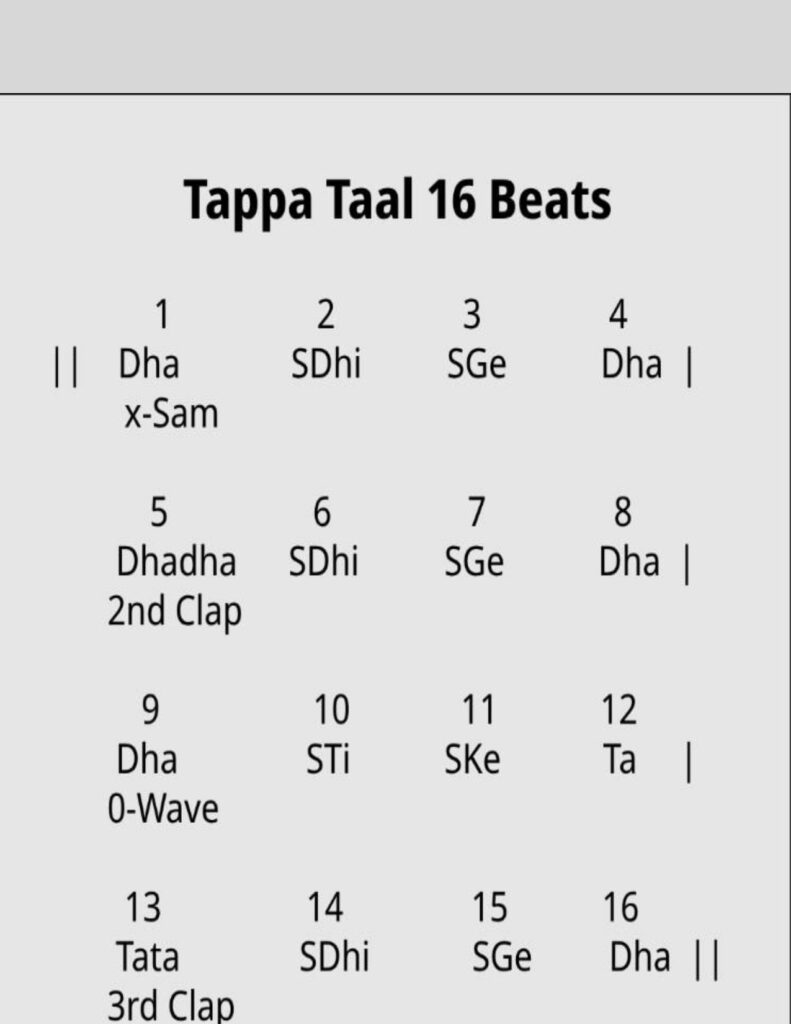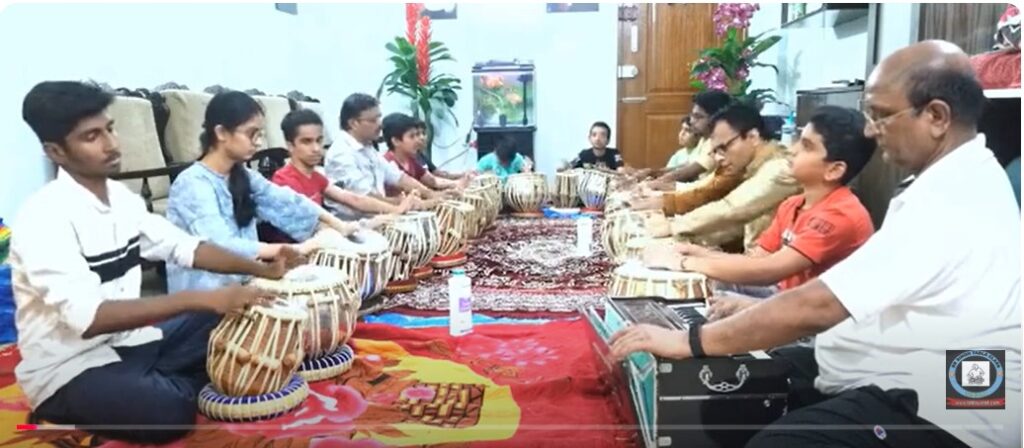Tappa Taal, a rhythmic cycle consisting of 16 beats, is a notable taal used in the classical Indian music tradition. The structure of a taal in Indian music provides a rhythmic framework that artists use to organize and measure the timing of musical compositions. Tappa, a form of classical music with roots in the semi-classical tradition, is characterized by its fast pace and intricate, melodious compositions.
Introducing-
The origins of Tappa can be traced back to the Punjab region of India and Pakistan. It gained popularity in the 18th century and is primarily associated with the gypsy singers of Punjab, known as ‘Camaar’ or ‘Nomads’. Tappa emerged as a distinct style due to its rapid tempo and the use of intricate taans (fast-moving sequences of notes). While the style drew from folk traditions, it was refined and elevated within the classical music spectrum, particularly through the work of musicians such as Ghulam Nabi Shori, who was instrumental in bringing the Tappa style to the royal courts of northern India.
Overview of Tappa Taal
- Matra (Beats): 16
- Vibhag (Divisions): 4 sections of 4 beats each
| Vibhag | Division | Bol | |——–|———-|—–| | 1 | 4 | Dha Dhin Na , Tin Na | | 2 | 4 | Dha Dhin Na , Tin Na | | 3 | 4 | Dha Tun Na , Kat Ta | | 4 | 4 | Dha Dhin Na , Tin Na |
Tappa compositions often involve intricate and fast-paced melodic movements, sung with great emotional expressiveness. The Tappa Taal’s layout supports and complements the swift and nimble vocal renderings that are typical of Tappa music.
Usage in Music
While Tappa Taal is distinctly different from more widely utilized taals like Teentaal or Jhaptaal, it has found niche applications within Hindustani classical music performances and recordings.
Notable Songs and Compositions:
Since Tappa itself is a classical genre with specific compositional styles, it isn’t directly associated with popular music titles in the same way as other taals that might cross into Bollywood or pop fusion. However, its influence can sometimes be traced in complex compositions requiring an intricate and lively rhythmic backdrop.
- “Kaun Gata Ram Gun Gaati” – A traditional Tappa composition frequently performed by exponents of this style.
- “Nachat Shyama Kanhaiya” – Often performed in a Tappa style, showcasing the rapid and articulate singing characteristic of the genre.
In essence, Tappa Taal provides a dynamic platform conducive to crafts rich, fast, and expressive compositions, integral to the distinct identity of Tappa music. Its vibrant rhythmic architecture continues to enchant audiences, maintaining the intrigue and admiration of both traditionalists and contemporary music enthusiasts.

https://www.youtube.com/@BhagawanSingh
https://www.facebook.com/sbsinghtablaguru
Tappa Taal 16 Beats,Tappa Taal History Tappa Music Indian Classical,
Tappa Taal Composition or Structure, 16 Beat Tappa Taal Details,
Tappa Rhythmic Pattern, Tappa Taal Examples, Tappa Song List, Tappa Taal in Hindi Music
Tappa Music Exponents

